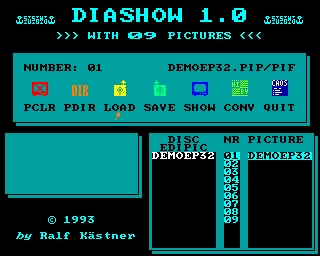CFOG's PIP, October 1988, Volume 7 No. 5, Whole No. 67, page 68
Further Thoughts on WordStar 5
by Steve Lucius
Here are a couple of new things I have learned about WS5 since writing the introductory article.
My problem with the driver to convert from WS5 disk format to WS4 was caused by an installation error when installing the printer. The problem with the WS4 driver not working was solved by reinstalling the "PDF" (printer deifinition) files and the "DRIVER?.OVR" files. Then I reinstalled the printer under the DRAFT.PDF format. Now when I select print driver "DRAFT" I go to printer, "ASCII" I get an "ASCII" text file and "WS4" I get a WS4 compatible file. (Note it is not real WS4 but ASCII with soft carriage returns and dot commands.) This sounds like Greek if you are used to the WS4 format of multiple printer drivers which include drivers for file formats as well as multiple printer drivers. With WS5 unless you define special formats only 3 formats show up and they are labeled "ASCII", "DRAFT" and "WS4", which you define in the WSCHANGE overlay what they mean. I still can't see where in the installation directions it says to do it this way, but it works.
Two calls to tech support result in nothing except some advice to use an environment command that only exists in DOS 3.2 and later, and the technicians comment that in spite of the documentations' assurance that 20 was enough that really 30 were needed. Also 20 was the minimum amount of buffers. It is running very well on 4 buffers and 20 files. Setting these parameters too high wastes memory. One call on a Sunday morning was answered promptly, the other during the day required 15 minutes of music on delay before getting advice.
The WS5 file format is greatly different from other WS versions. It has a header with the default file information in it and then the file is in ASCII. No more use of the high bit. As a consequence if you want to write something in WS5 and then give it to someone using an older WS you need to print it using the WS4 driver. This will strip out the header and convert the dot commands to their WS4 equivalents. WS5 now formats lines on inches rather than spaces so many dot commands have changed.
Another problem was lack of a list as to what files do what. This will be in the CFOG library along with other files about WS5 on a special disk. This came from the CompuServe MICROPRO SIG. Even with the files pared down by removing the modem program, file manager, mailing list and outliner, along with all the files that pertain to the advanced preview I still am at 2.17 megs, a considerable jump over the 1 meg that WS4 takes. I think I can cut it down more if I can find which printer drivers are unneeded, but it still is a big program.
I also got a chance to try the program out on a machine with a graphics board so I could use the advanced preview. It was interesting to see the whole 12 page document at once and be able to zoom in on individual pages at will.
WS5 seems faster that WS4 with the exception of the hyphenation function which sometimes requires a disk access to read the entire dictionary. The function works so much better than WS4 it is worth the wait. The only benchmark I have done so far was a search for almost the last word in a 28k file. This is about as large as a file can be and still be completely in memory, no "LARGE-FILE" warning. On WS4 this took 13 seconds, WS5 it took 10 seconds and on the shareware editor Galaxy it took 2 seconds. While WS5 is faster it is still no speed demon. All tests were run on an XT clone.

